When Tesla first came to the scene in the auto industry there were no automakers manufacturing all electric vehicles on the same scale. Now, the industry is pivoting towards an all-electric future. Much like Tesla disrupted the auto industry, Apple did something similar in their own ecosystem by switching from traditional x86 based processors to developing an in-house ARM based processor, Apple silicon, for its product offerings. And now, Qualcomm is looking to do the same for the broader PC market with its Snapdragon X Elite processor for Windows based laptops.
Efficient computing
As we’ve seen with Apple’s M series processors, ARM chips offer superior energy efficiency and processing power compared to traditional x86 chips in performance per watt. This means that you can achieve striking performance at just a fraction of the power draw. The Snapdragon X Elite boasts something similar, this time on Windows PCs. However instead of using an ARM reference design to develop cores like the Cortex series in their mobile platforms of the past, Qualcomm has developed its own in-house core architecture which is dubbed ‘Oryon’. These CPU cores still use ARM instructions for broad compatibility, but are designed entirely in house at Qualcomm from the ground up.
Benchmarks
We had a chance to experience some benchmarks first hand at how the X Elite platform stacks up against the competition. The table below lists some benchmarks that were showcased on a 23w Snapdragon X Elite model (system wattage not package wattage) versus an Intel Core Ultra 7 155h:
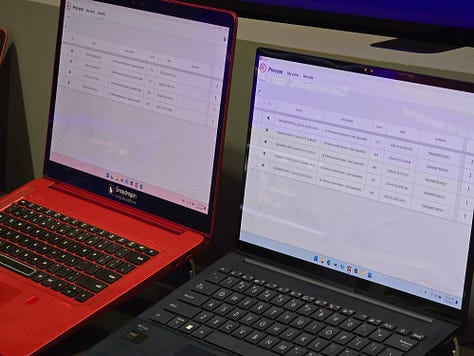
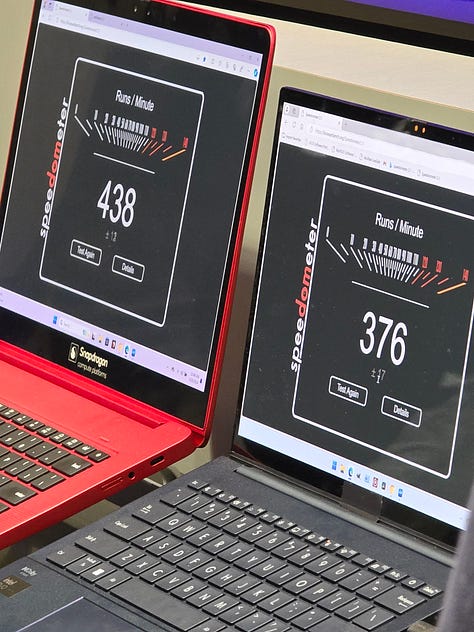
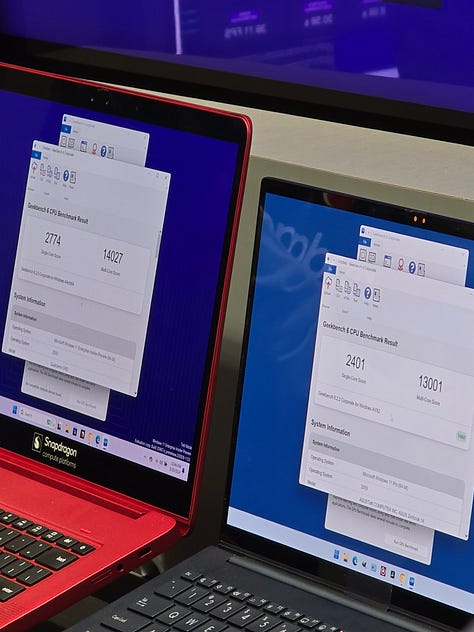
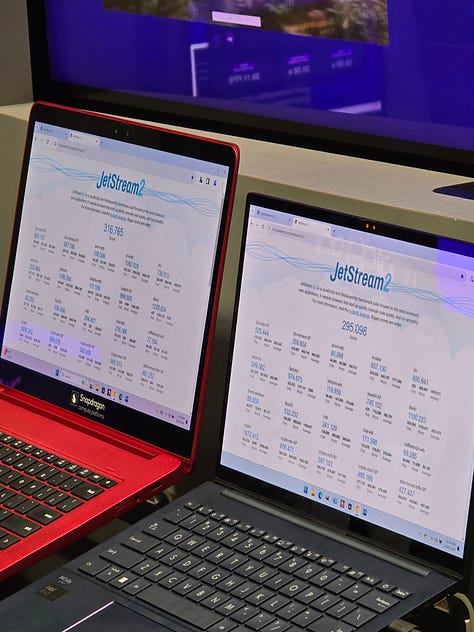
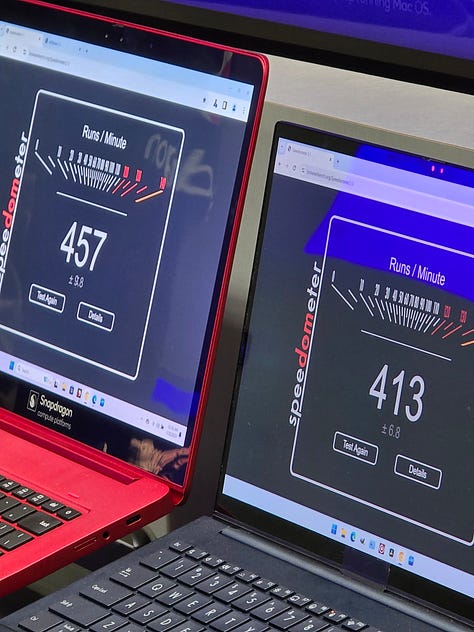
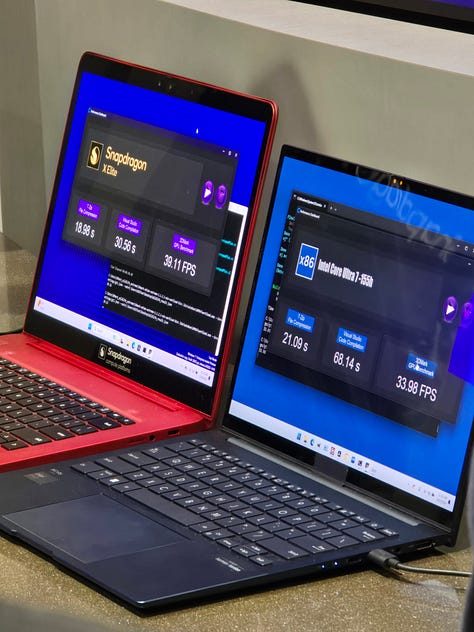
The numbers don’t lie – the X Elite is a powerhouse, winning out on every benchmark against the Intel Core Ultra 7 system.
And the keen eyes among you may have noticed in the benchmarks list we also had a chance to take a look at the new stable ARM native version of Google Chrome, which is launching today.
Power vs Performance
One thing that’s interesting is the way that Qualcomm provides power information for the system. Unlike traditional chip manufacturers, the CPU is not measured in TDP (or Thermal Design Power), which is a number that’s used to effectively measure amount of heat expected for a CPU under load. While not based on ‘power consumption’ per say, reviewers usually refer to this number as sort of a de-facto reference to the raw power of a chip. Qualcomm, instead, is using system total power, most likely carried over from how they measure power consumption of their mobile platform chips, like the Snapdragon 8 Gen 3. This means that like in the example system above, the 23 watt figure is for the entire system and not just the CPU, presumably leading to the fact the CPU uses even less power - which is something I’m eager to test once I get my hands on actual hardware.
Now, we didn’t have the ability to measure temperatures or other metrics on these systems, but speaking from experience as someone who uses a newer 13th gen Intel Core Ultra 7 laptop for work that idles at or above 60 degrees Celsius, having something that can be even more efficient at just a fraction of the power draw is a very attractive prospect indeed.
All this to say is the Snapdragon X Elite is shaping up to be serious competition in the laptop PC space, especially for Intel based systems.
The Windows Question
One important thing to mention is that great hardware requires great software to run on it. Windows 11 ARM has been around for a few years now, happily running on Microsoft’s own Surface devices using their customized Qualcomm processors under the ‘SQ’ moniker. But up until this point, this has been a small market. We’ve seen a handful of other devices running the Snapdragon 8cx Gen 2/3 chips as well, but only on single devices from the likes of hardware manufacturers Dell or IBM.
For Windows ARM, and by extension the X Elite, to truly break into and change the PC space, the software will need to be equal or better than regular x86/x64 versions of Windows 11. All things said, consumers shouldn’t need to know what ‘ARM’ is other than it’s a fast and efficient platform and everything should just ‘work’ like a normal PC. Fortunately, it looks like from our early experience, this is mostly the case.
More and more applications are being ported to natively run on ARM64, and for apps that have not fully committed to native ARM (for example, Adobe’s Acrobat PDF software), they can run in ARM64EC mode which allows developers to port specific pieces of code that benefit from natively running on ARM, while everything else runs in the built-in Windows x64 emulation layer. Even applications that are just running on the x64 emulation layer have seen a boost in performance, in part due to the optimizations Microsoft has been tweaking in newer Windows 11 builds.
However, nothing is perfect, and we’ve seen some issues with certain applications that are running in the x64 emulation layer. We’re hoping that in due time with more mass adoption of Windows ARM devices, developers and Microsoft alike can boost performance that is equal to x86/x64 versions of Windows.
Exciting times in the PC space
With Microsoft and Qualcomm working closely together with developers on the software side and with what we’ve seen so far in benchmarks on the hardware side, the Snapdragon X Elite is shaping up to be one of the most exciting developments in the PC industry in a long time.
Stay tuned as hardware should be coming soon and we’ll be going into a deep dive once we get our hands on them!
Thank you to Qualcomm for inviting us out to San Diego to experience the X Elite platform in person. Travel and accommodation was provided, but there was no editorial influence.


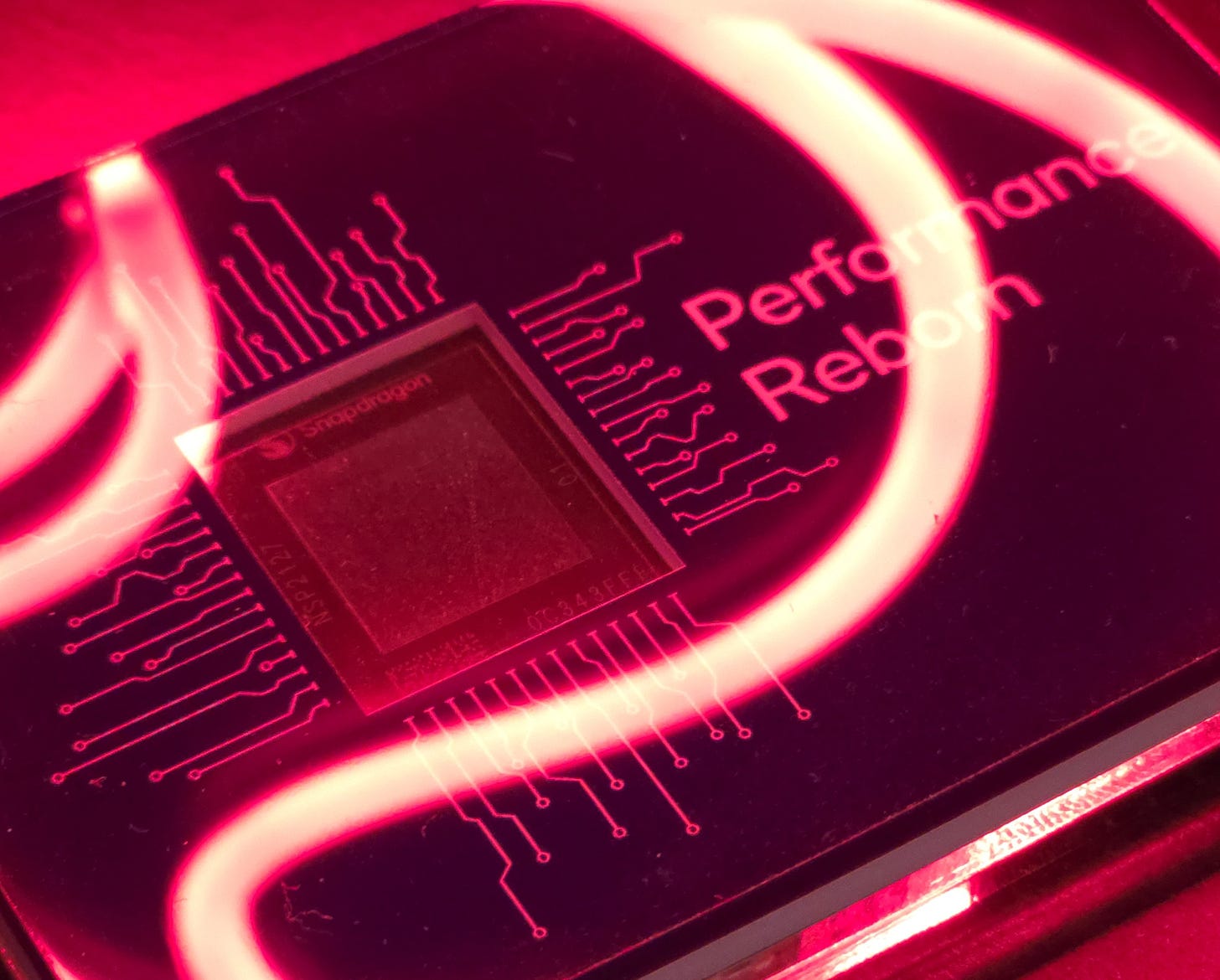

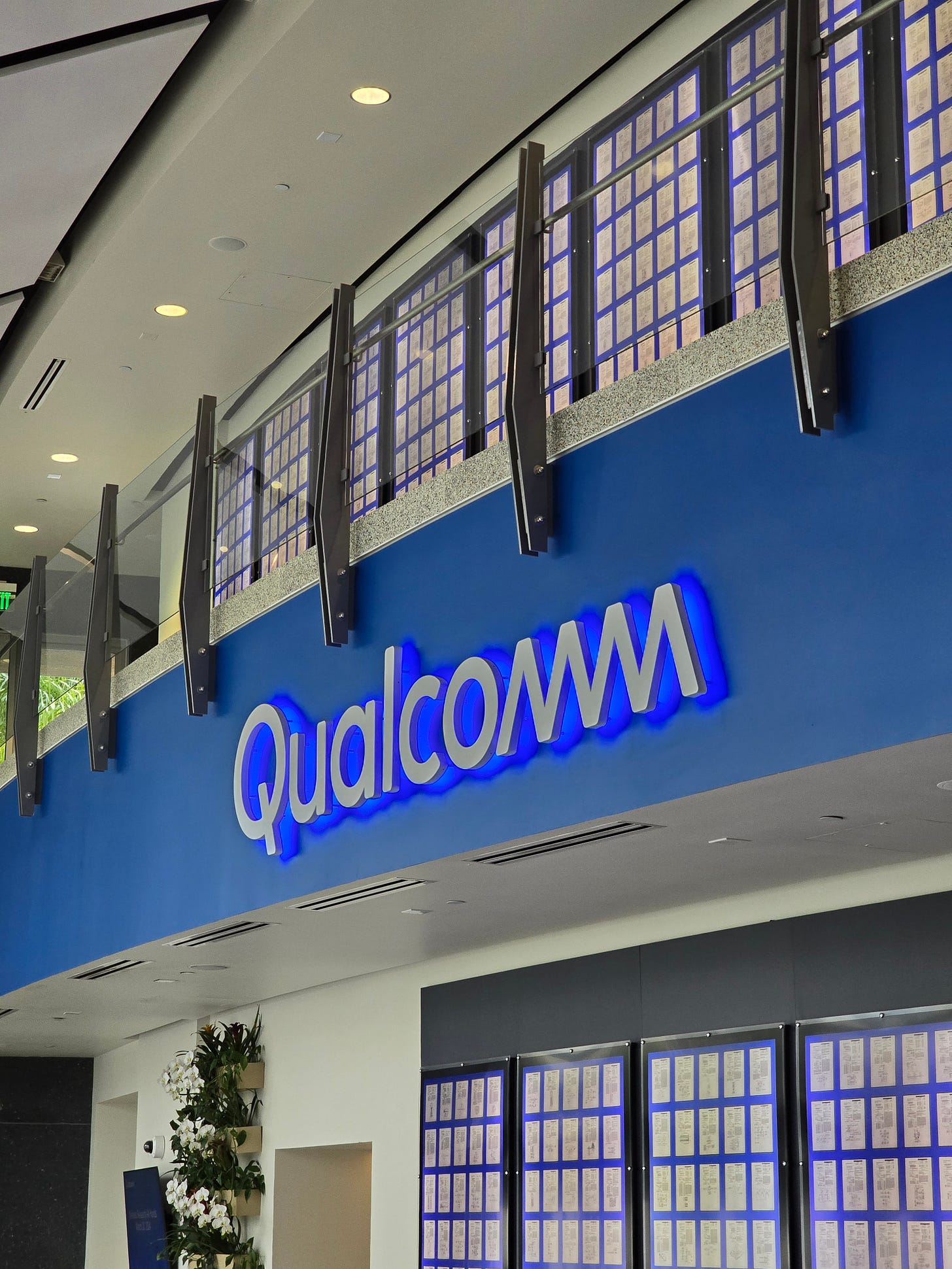
Great article Devin! Glad Qualcomm invited you as computers and EVs are your specialty so this was right up your alley.
Great stuff Devin, like chad said I'm glad Qualcomm invited you over. 😎